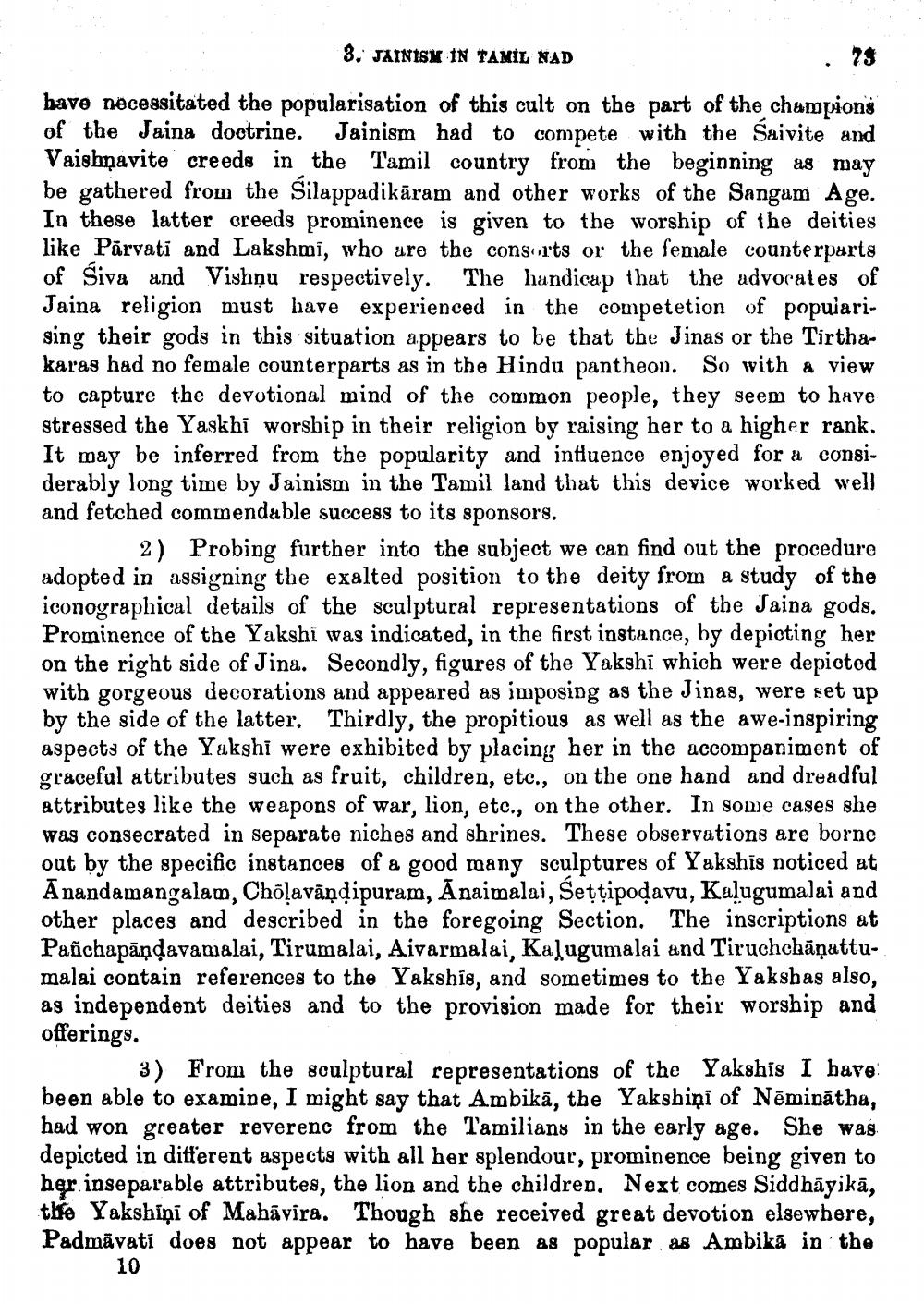________________
3. JAINISM IN TAMIL NAD
have necessitated the popularisation of this cult on the part of the champions of the Jaina doctrine. Jainism had to compete with the Saivite and Vaishnavite creeds in the Tamil country from the beginning as may be gathered from the Silappadikaram and other works of the Sangam Age. In these latter creeds prominence is given to the worship of the deities like Parvati and Lakshmi, who are the consorts or the female counterparts of Siva and Vishnu respectively. The handicap that the advocates of Jaina religion must have experienced in the competetion of popularising their gods in this situation appears to be that the Jinas or the Tirthakaras had no female counterparts as in the Hindu pantheon. So with a view to capture the devotional mind of the common people, they seem to have stressed the Yaskhi worship in their religion by raising her to a higher rank. It may be inferred from the popularity and influence enjoyed for a considerably long time by Jainism in the Tamil land that this device worked well and fetched commendable success to its sponsors.
73
2) Probing further into the subject we can find out the procedure adopted in assigning the exalted position to the deity from a study of the iconographical details of the sculptural representations of the Jaina gods. Prominence of the Yakshi was indicated, in the first instance, by depicting her on the right side of Jina. Secondly, figures of the Yakshi which were depicted with gorgeous decorations and appeared as imposing as the Jinas, were set up by the side of the latter. Thirdly, the propitious as well as the awe-inspiring aspects of the Yakshi were exhibited by placing her in the accompaniment of graceful attributes such as fruit, children, etc., on the one hand and dreadful attributes like the weapons of war, lion, etc., on the other. In some cases she was consecrated in separate niches and shrines. These observations are borne out by the specific instances of a good many sculptures of Yakshis noticed at Anandamangalam, Chōlavandipuram, Anaimalai, Seṭṭipoḍavu, Kalugumalai and other places and described in the foregoing Section. The inscriptions at Pañchapaṇḍavamalai, Tirumalai, Aivarmalai, Kalugumalai and Tiruchchāṇattumalai contain references to the Yakshis, and sometimes to the Yakshas also, as independent deities and to the provision made for their worship and offerings.
3) From the sculptural representations of the Yakshis I have been able to examine, I might say that Ambika, the Yakshini of Neminatha, had won greater reverenc from the Tamilians in the early age. She was depicted in different aspects with all her splendour, prominence being given to her inseparable attributes, the lion and the children. Next comes Siddhāyikā, the Yakshini of Mahavira. Though she received great devotion elsewhere, Padmavati does not appear to have been as popular as Ambika in the
10




